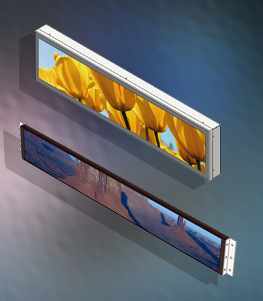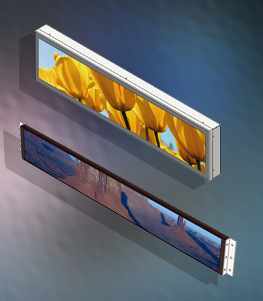
Sun readable LCD Displays specializes in offering sunlight readable displays that is designed to retain clear visibility in bright outdoor environments. By leveraging ultra-modern technologies like anti-reflective coatings, high brightness levels, optical bonding and wide viewing angles, CDS guarantees their displays perform optimally under direct sunlight. These strong displays are built to tolerate harsh environmental conditions, providing both durability and energy efficiency. In addition to this, with customizable options in sizes, resolutions, and touch capabilities, CDS sunlight readable displays accomplish diverse applications like outdoor kiosks, marine displays, and public information systems. Accordingly, whether for commercial, industrial or public use, CDS offers the ideal display solutions for challenging outdoor settings.
What Is Sunlight Readable Display?
Sun readable LCD Displays are a type of screen exclusively designed to retain clear visibility and readability under direct sunlight and other bright lighting conditions. The offered displays are widely used in outdoor environments where conventional screens would be washed out by the sun’s glare.
Key features of Sunlight Readable Display are:
High Brightness: These displays typically provide high brightness levels, basically ranging from 1,000 nits to 3,000 nits or more, to guarantee visibility even in direct sunlight.
Optical Bonding: Optical bonding engages laminating the display with a defending layer, reducing reflections and enhancing contrast and durability.
Anti-Reflective Coatings: These coatings reduce glare, making the display easier to read in intense conditions.
Wide Viewing Angles: Assures that the display can be viewed clearly from a variety of angles, which is vital for outdoor environments.
Durability: Many sunlight readable displays are built to endure harsh environmental conditions like temperature variations, moisture, as well as physical impacts.
Touch Screen Options: Some models provide touch screen capabilities that are also designed to be operable under sunlight and in a variety of weather conditions.
Custom Sizes and Resolutions: CDS offers a range of sizes and resolutions to suit diverse applications, from small panels for handheld devices to big screens for public information displays.
Enhanced Colour and Image Quality: These displays retain colour accuracy and image clarity even under strong light. Ultra-modern optical bonding techniques and anti-reflective coatings give to improved contrast and sharpness.
What is an LCD controller (LCD display controller)?
Are you curious about LCD controller boards? Do you want to know more about how they work and what their purpose is? An LCD controller (Liquid Crystal Display Controller) is a focused integrated circuit (IC) that basically connects to a host CPU and also controls the LCD panel. It is well-known as an LCDC (LCD Controller), liquid crystal controller and display controller. The LCDC receives display image data from the host CPU and outputs the data and synchronization signals at timings that match the specifications of the LCD panel.
Some LCDCs is available with built-in memory and image processing functions, enabling them to expand, shrink, rotate, and overlay numerous images to fit the display screen size. An LCD controller boards are often interfaced using an LCD controller board, an electrical component. To display the input data, it acts as a conduit between the video source and the latter.
Bio: A controller board is a part in an electrical circuit that interfaces with a marginal object by connecting the computer to it. An LCD controller boards is often called the Analog/Digital (A/D) board. The person who wrote this article may be a content creator and writes blog for the readers.













Write a comment ...